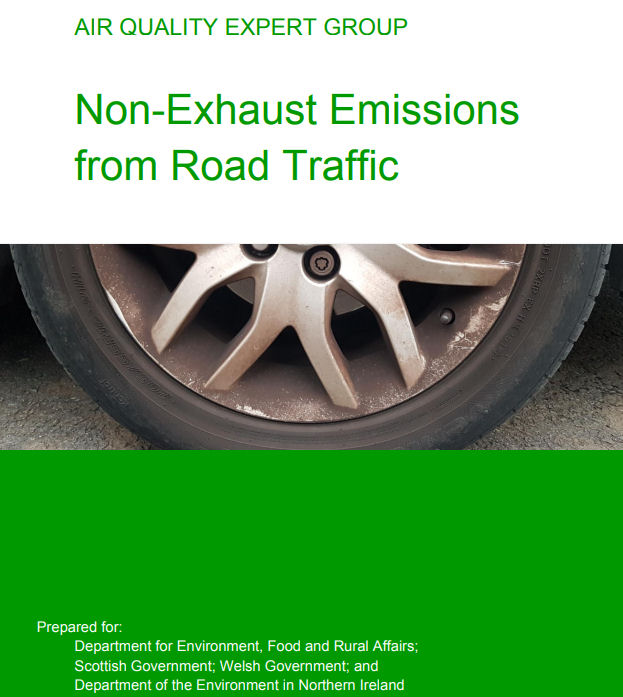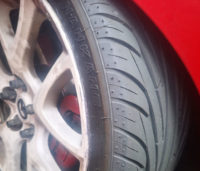Tyre and brake wear: AQEG releases “most globally comprehensive analysis”

Particulate and plastic pollution from brakes, tyres and road wear are in the spotlight again. The Air Quality Expert Group (AQEG) released a new report today that highlights the impact of this pollution, and the UK Government reports that Environment Minister Thérèse Coffey and Transport Minister Michael Ellis are “leading a push” to tackle its impact. The aim is for the introduction of an international standard that covers tyre and brake wear.
The AQEG report ‘Non-Exhaust Emissions from Road Traffic’ calls for urgent action to address the “problem of tyres and brakes”, which it predicts will account for 9.5 per cent of national emissions of PM2.5 by 2030 if no abatement measures are introduced. Actual emissions are admittedly expected to remain relatively stable at just under 5,000 tonnes per annum – tyres and brakes’ proportion of the total will rise over the coming decade due to decreasing PM2.5 emissions from vehicle exhausts.
As outlined in its Clean Air Strategy, the government is now calling for industry to support the development of standardised methods for measuring emissions from these sources, leading to a new international standard for tyre and brake wear.
This comes as the government also publishes the summary of responses to its call for evidence on these emission sources, which indicate that the problem is still poorly understood.
Calling on the automotive industry to consider action to address the problem, Thérèse Coffey said: “The documents published today make clear that it is not just fumes from car exhaust pipes that have a detrimental impact on human health but also the tiny particles that are released from their brakes and tyres.
“That is why an ambition of our Clean Air Strategy is to address all sources of particulate matter, including those from transport. Today’s research goes a long way in helping us better understand the problem.
“Emissions from car exhausts have been decreasing through development of cleaner technologies and there is now a need for the car industry to find innovative ways to address the challenges of air pollution from other sources.”
Transport Minister Michael Ellis stated: “We are committed to reducing all transport emissions and cleaning up our air. With record levels of ultra-low emission vehicles on the UK’s roads, things are clearly moving in the right direction.
“To continue this progress, we are looking for ways to reduce emissions from other sources such as brakes and tyres. We are engaging at an international level to identify how to measure these emissions as well as aiming to develop standards to control them.
“Each time a car is driven, tiny pieces of particulate matter such as dust are released into the air from the brake wear, tyre wear and road surface wear.
“These particles enter the airstream having a detrimental impact on human health for drivers, passengers and bystanders. Plastic particles from tyres are also deposited into our sewers and lead to harmful consequences to our marine wildlife and aquatic food chains.”
Reducing the release of particles represents a considerable challenge for the automotive and tyre industries. Mike Hawes, chief executive of the Society of Motor Manufacturers and Traders, says that the automotive industry is “committed to improving air quality” and has already all but eliminated particulate matter from tailpipe emissions. “Brake, tyre and road wear is a recognised challenge as emissions from these sources are not easy to measure,” he stresses.
“A United Nations global group, including industry experts and government, is working to better understand, and agree how to measure, these emissions,” Hawes continues. “Maintenance of the road surface, as well as further investment in new vehicle technologies, is essential to reducing these emissions, without compromising safety and we welcome further research in this area.”
The government believes the new AQEG report “offers the most globally comprehensive analysis to date of the impact of brake and tyre wear.”
The government is also due to shortly publish the results of a new £200,000 research project with the University of Plymouth, assessing the impact of microplastics from tyres and clothing on the marine environment. It comments that industry innovation is one way to tackle the challenge and the government is also advising drivers to consider how their driving style can reduce emissions, with gentle braking, driving at a consistent speed and using hybrid and electric vehicles with regenerative braking some of the ways to play a part.
The AQEG report can be downloaded here.




Comments